�
Zdzislaw Bubnicki
Modern Control Theory
Zdzislaw Bubnicki
Modern Control Theory
With 104 figures
�
Professor Zdzislaw Bubnicki, PhD
Wroclaw University of Technology
Institute of Information Science and Engineering
Wyb. Wyspianskiego 27
50-370 Wroclaw
Poland
zdzislaw.bubnicki@pwr.wroc.pl
Originally published in Polish by Polish Scientifi c Publishers PWN, 2002
Library of Congress Control Number: 2005925392
ISBN 10 3-540-23951-0 Springer Berlin Heidelberg New York
ISBN 13 978-3-540-23951-2 Springer Berlin Heidelberg New York
This work is subject to copyright. All rights are reserved, whether the whole or part of the material is
concerned, specifically the rights of translation, reprinting, reuse of illustrations, recitation, broadcasting,
reproduction on microfilm or in other ways, and storage in data banks. Duplication of this publication or
parts thereof is permitted only under the provisions of the German Copyright Law of September 9, 1965,
in its current version, and permission for use must always be obtained from Springer-Verlag. Violations are
liable to prosecution under German Copyright Law.
Springer is a part of Springer Science+Business Media
springeronline.com
© Springer-Verlag Berlin Heidelberg 2005
Printed in Germany
The use of general descriptive names, registered names, trademarks, etc. in this publication does not imply,
even in the absence of a specific statement, that such names are exempt from the relevant protective laws
and regulations and therefore free for general use.
Typesetting: Data conversion by the author.
Final processing by PTP-Berlin Protago-TEX-Production GmbH, Germany
Cover-Design: Medionet AG, Berlin
Printed on acid-free paper 89/3141/Yu – 5 4 3 2 1 0
�
Preface
The main aim of this book is to present a unified, systematic description of
basic and advanced problems, methods and algorithms of the modern con-
trol theory considered as a foundation for the design of computer control
and management systems. The scope of the book differs considerably from
the topics of classical traditional control theory mainly oriented to the
needs of automatic control of technical devices and technological proc-
esses. Taking into account a variety of new applications, the book presents
a compact and uniform description containing traditional analysis and op-
timization problems for control systems as well as control problems with
non-probabilistic models of uncertainty, problems of learning, intelligent,
knowledge-based and operation systems – important for applications in the
control of manufacturing processes, in the project management and in the
control of computer systems. Into the uniform framework of the book,
original ideas and results based on the author’s works concerning uncertain
and intelligent knowledge-based control systems, applications of uncertain
variables and the control of complexes of operations have been included.
The material presented in the book is self-contained. Using the text does
not require any earlier knowledge on the control science. The presentation
requires only a basic knowledge of linear algebra, differential equations
and probability theory. I hope that the book can be useful for students, re-
searches and all readers working in the field of control and information
science and engineering.
I wish to express my gratitude to Dr. D. Orski and Dr. L. Siwek, my co-
workers at the Institute of Information Science and Engineering of Wro-
claw University of Technology, who assisted in the preparation of the
manuscript.
Z. Bubnicki
�
Contents
1 General Characteristic of Control Systems...............................................1
1.1 Subject and Scope of Control Theory................................................1
1.2 Basic Terms .......................................................................................2
1.2.1 Control Plant...............................................................................4
1.2.2 Controller....................................................................................6
1.3 Classification of Control Systems......................................................7
1.3.1 Classification with Respect to Connection Between Plant and
Controller.............................................................................................7
1.3.2 Classification with Respect to Control Goal...............................9
1.3.3 Other Cases...............................................................................11
1.4 Stages of Control System Design ....................................................13
1.5 Relations Between Control Science and Related Areas in Science
and Technology .....................................................................................14
1.6 Character, Scope and Composition of the Book..............................15
2 Formal Models of Control Systems ........................................................17
2.1 Description of a Signal ....................................................................17
2.2 Static Plant .......................................................................................18
2.3 Continuous Dynamical Plant ...........................................................19
2.3.1 State Vector Description...........................................................20
2.3.2 “Input-output” Description by Means of Differential Equation24
2.3.3 Operational Form of “Input-output” Description......................25
2.4 Discrete Dynamical Plant ................................................................29
2.5 Control Algorithm ...........................................................................31
2.6 Introduction to Control System Analysis.........................................33
2.6.1 Continuous System ...................................................................35
2.6.2 Discrete System ........................................................................37
3 Control for the Given State (the Given Output)......................................41
3.1 Control of a Static Plant...................................................................41
3.2 Control of a Dynamical Plant. Controllability.................................44
3.3 Control of a Measurable Plant in the Closed-loop System .............47
3.4 Observability....................................................................................50
�
VIII Contents
3.5 Control with an Observer in the Closed-loop System .....................55
3.6 Structural Approach.........................................................................59
3.7 Additional Remarks .........................................................................62
4 Optimal Control with Complete Information on the Plant .....................65
4.1 Control of a Static Plant...................................................................65
4.2 Problems of Optimal Control for Dynamical Plants........................69
4.2.1 Discrete Plant............................................................................69
4.2.2 Continuous Plant.......................................................................72
4.3 Principle of Optimality and Dynamic Programming .......................74
4.4 Bellman Equation ............................................................................79
4.5 Maximum Principle .........................................................................85
4.6 Linear-quadratic Problem ................................................................93
5 Parametric Optimization .........................................................................97
5.1 General Idea of Parametric Optimization ........................................97
5.2 Continuous Linear Control System..................................................99
5.3 Discrete Linear Control System.....................................................105
5.4 System with the Measurement of Disturbances.............................107
5.5 Typical Forms of Control Algorithms in Closed-loop Systems ....110
5.5.1 Linear Controller.....................................................................111
5.5.2 Two-position Controller .........................................................112
5.5.3 Neuron-like Controller............................................................112
5.5.4 Fuzzy Controller .....................................................................113
6 Application of Relational Description of Uncertainty .........................117
6.1 Uncertainty and Relational Knowledge Representation ................117
6.2 Analysis Problem...........................................................................122
6.3 Decision Making Problem .............................................................127
6.4 Dynamical Relational Plant ...........................................................130
6.5 Determinization .............................................................................136
7 Application of Probabilistic Descriptions of Uncertainty.....................143
7.1 Basic Problems for Static Plant and Parametric Uncertainty........143
7.2 Basic Problems for Static Plant and Non-parametric Uncertainty152
7.3 Control of Static Plant Using Results of Observations..................157
7.3.1 Indirect Approach ...................................................................158
7.3.2 Direct Approach......................................................................164
7.4 Application of Games Theory........................................................165
7.5 Basic Problem for Dynamical Plant...............................................170
7.6 Stationary Stochastic Process ........................................................174
�
IX
7.7 Analysis and Parametric Optimization of Linear Closed-loop
Control System with Stationary Stochastic Disturbances....................178
7.8 Non-parametric Optimization of Linear Closed-loop Control System
with Stationary Stochastic Disturbances..............................................183
7.9 Relational Plant with Random Parameter......................................188
8 Uncertain Variables and Their Applications.........................................193
8.1 Uncertain Variables .......................................................................193
8.2 Application of Uncertain Variables to Analysis and Decision
Making (Control) for Static Plant ........................................................201
8.2.1 Parametric Uncertainty ...........................................................201
8.2.2 Non-parametric Uncertainty ...................................................205
8.3 Relational Plant with Uncertain Parameter....................................211
8.4 Control for Dynamical Plants. Uncertain Controller .....................216
9 Fuzzy Variables, Analogies and Soft Variables ...................................221
9.1 Fuzzy Sets and Fuzzy Numbers.....................................................221
9.2 Application of Fuzzy Description to Decision Making (Control) for
Static Plant ...........................................................................................228
9.2.1 Plant without Disturbances .....................................................228
9.2.2 Plant with External Disturbances............................................233
9.3 Comparison of Uncertain Variables with Random and Fuzzy
Variables ..............................................................................................238
9.4 Comparisons and Analogies for Non-parametric Problems ..........242
9.5 Introduction to Soft Variables........................................................246
9.6 Descriptive and Prescriptive Approaches. Quality of Decisions ...249
9.7 Control for Dynamical Plants. Fuzzy Controller ...........................255
10 Control in Closed-loop System. Stability ...........................................259
10.1 General Problem Description.......................................................259
10.2 Stability Conditions for Linear Stationary System ......................264
10.2.1 Continuous System ...............................................................264
10.2.2 Discrete System ....................................................................266
10.3 Stability of Non-linear and Non-stationary Discrete Systems .....270
10.4 Stability of Non-linear and Non-stationary Continuous Systems 277
10.5 Special Case. Describing Function Method.................................278
10.6 Stability of Uncertain Systems. Robustness ................................282
10.7 An Approach Based on Random and Uncertain Variables..........291
10.8 Convergence of Static Optimization Process...............................295
11 Adaptive and Learning Control Systems ............................................299
11.1 General Concepts of Adaptation..................................................299
�
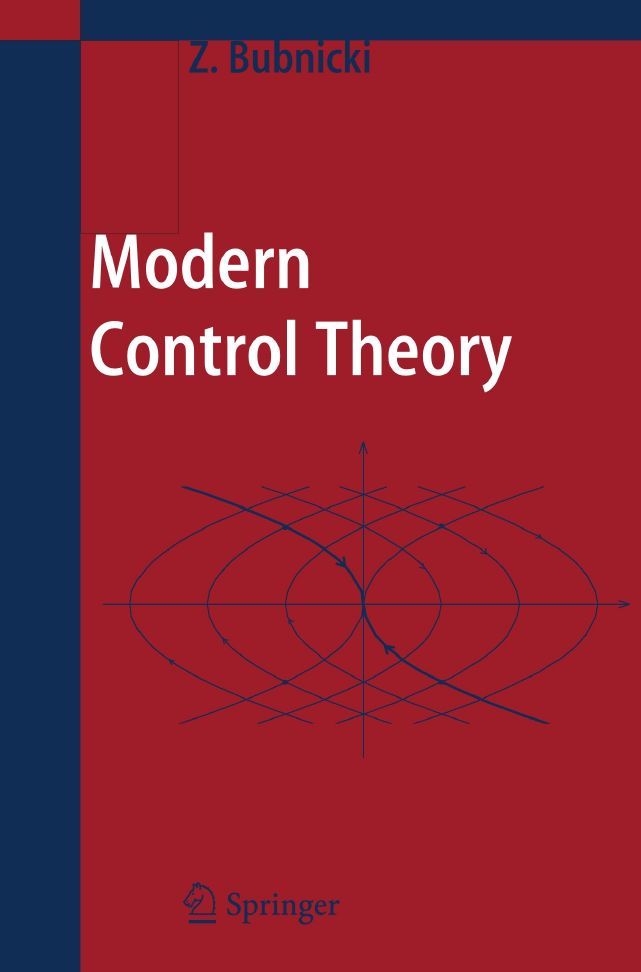
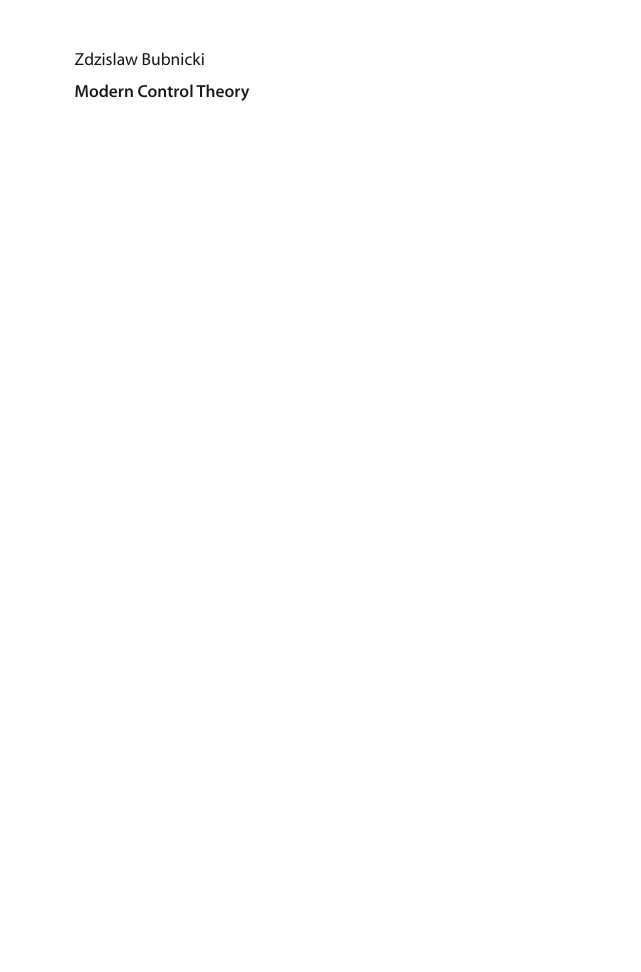
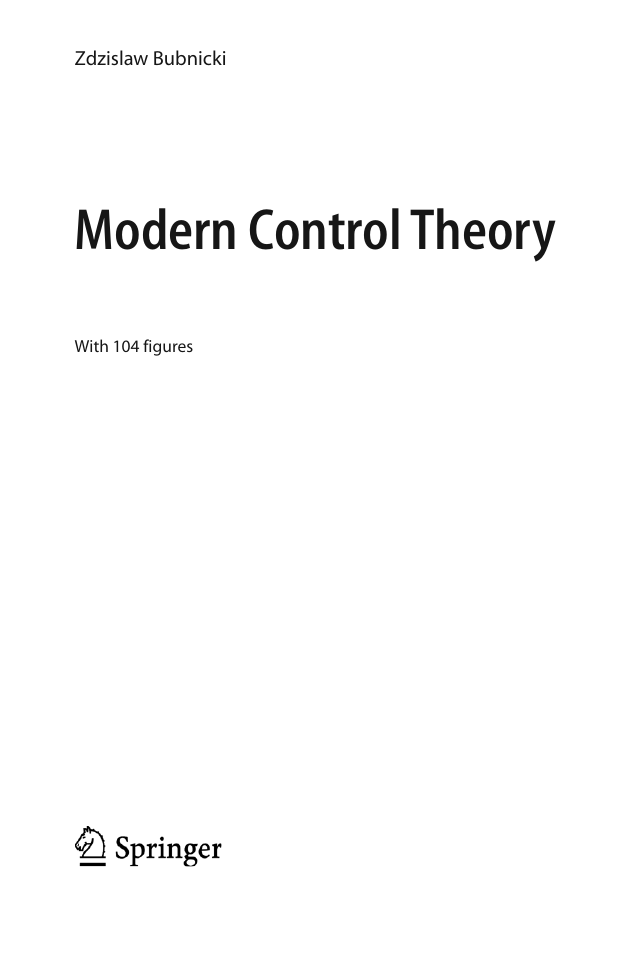


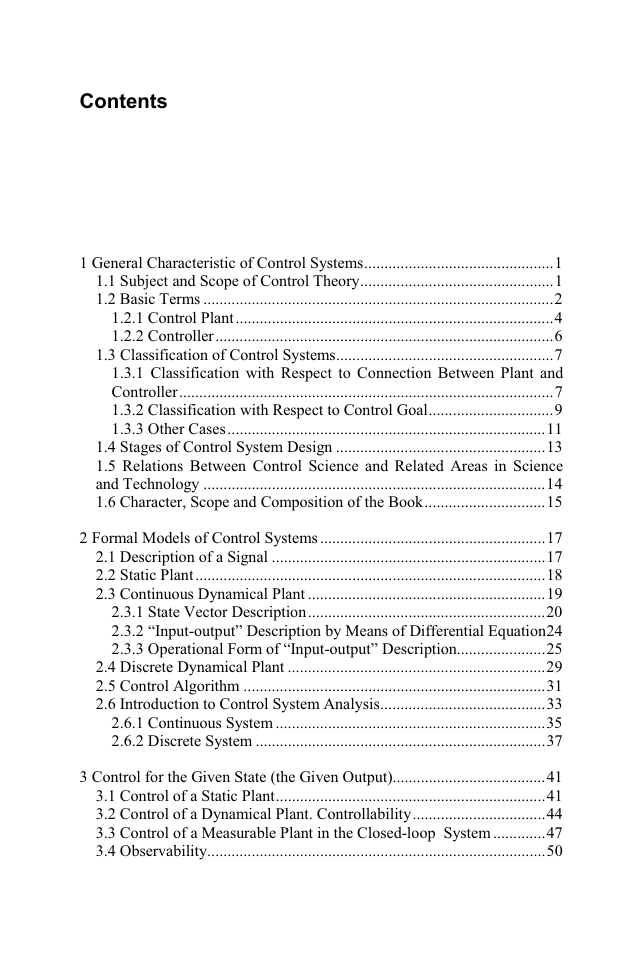
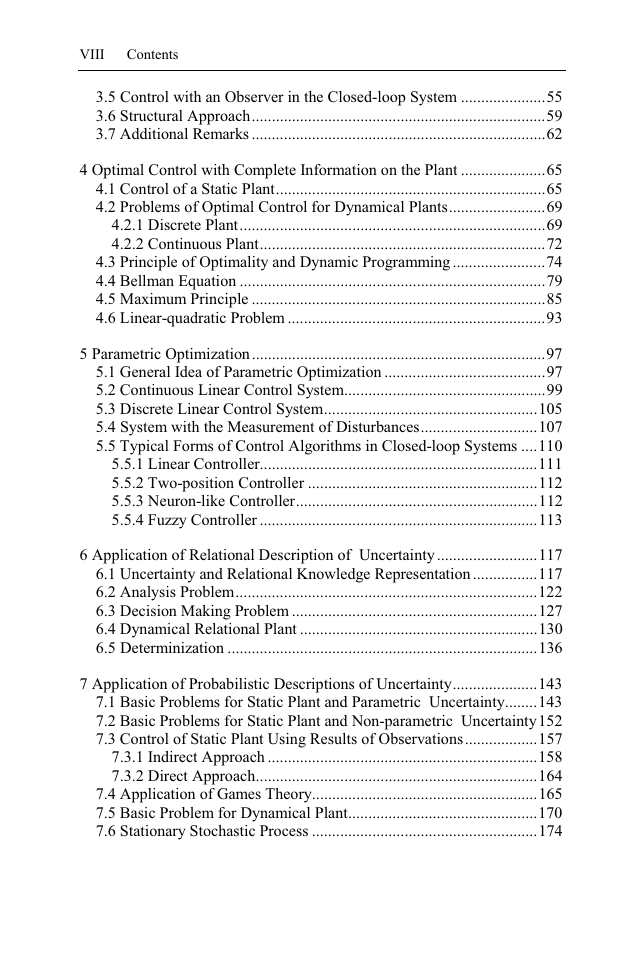
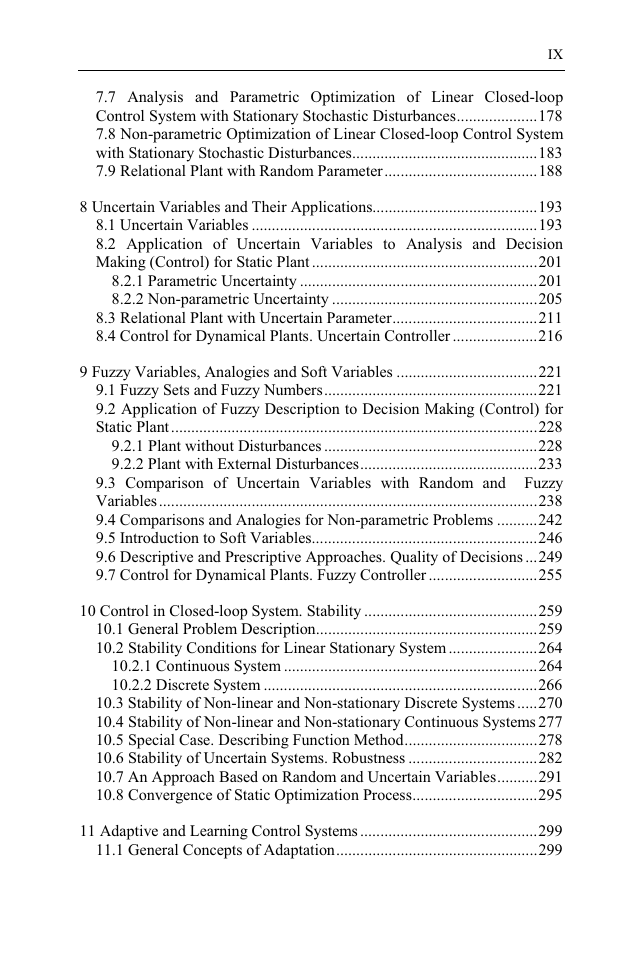








 2023年江西萍乡中考道德与法治真题及答案.doc
2023年江西萍乡中考道德与法治真题及答案.doc 2012年重庆南川中考生物真题及答案.doc
2012年重庆南川中考生物真题及答案.doc 2013年江西师范大学地理学综合及文艺理论基础考研真题.doc
2013年江西师范大学地理学综合及文艺理论基础考研真题.doc 2020年四川甘孜小升初语文真题及答案I卷.doc
2020年四川甘孜小升初语文真题及答案I卷.doc 2020年注册岩土工程师专业基础考试真题及答案.doc
2020年注册岩土工程师专业基础考试真题及答案.doc 2023-2024学年福建省厦门市九年级上学期数学月考试题及答案.doc
2023-2024学年福建省厦门市九年级上学期数学月考试题及答案.doc 2021-2022学年辽宁省沈阳市大东区九年级上学期语文期末试题及答案.doc
2021-2022学年辽宁省沈阳市大东区九年级上学期语文期末试题及答案.doc 2022-2023学年北京东城区初三第一学期物理期末试卷及答案.doc
2022-2023学年北京东城区初三第一学期物理期末试卷及答案.doc 2018上半年江西教师资格初中地理学科知识与教学能力真题及答案.doc
2018上半年江西教师资格初中地理学科知识与教学能力真题及答案.doc 2012年河北国家公务员申论考试真题及答案-省级.doc
2012年河北国家公务员申论考试真题及答案-省级.doc 2020-2021学年江苏省扬州市江都区邵樊片九年级上学期数学第一次质量检测试题及答案.doc
2020-2021学年江苏省扬州市江都区邵樊片九年级上学期数学第一次质量检测试题及答案.doc 2022下半年黑龙江教师资格证中学综合素质真题及答案.doc
2022下半年黑龙江教师资格证中学综合素质真题及答案.doc